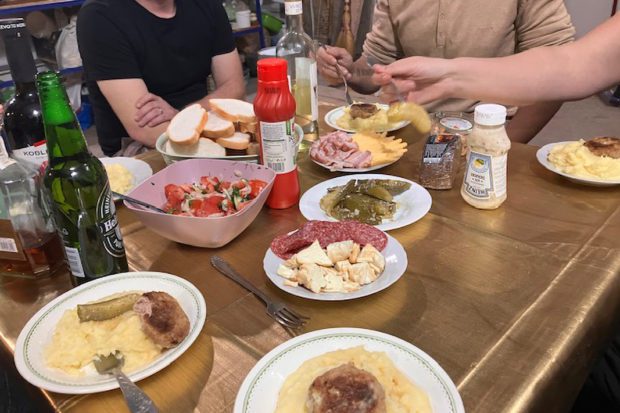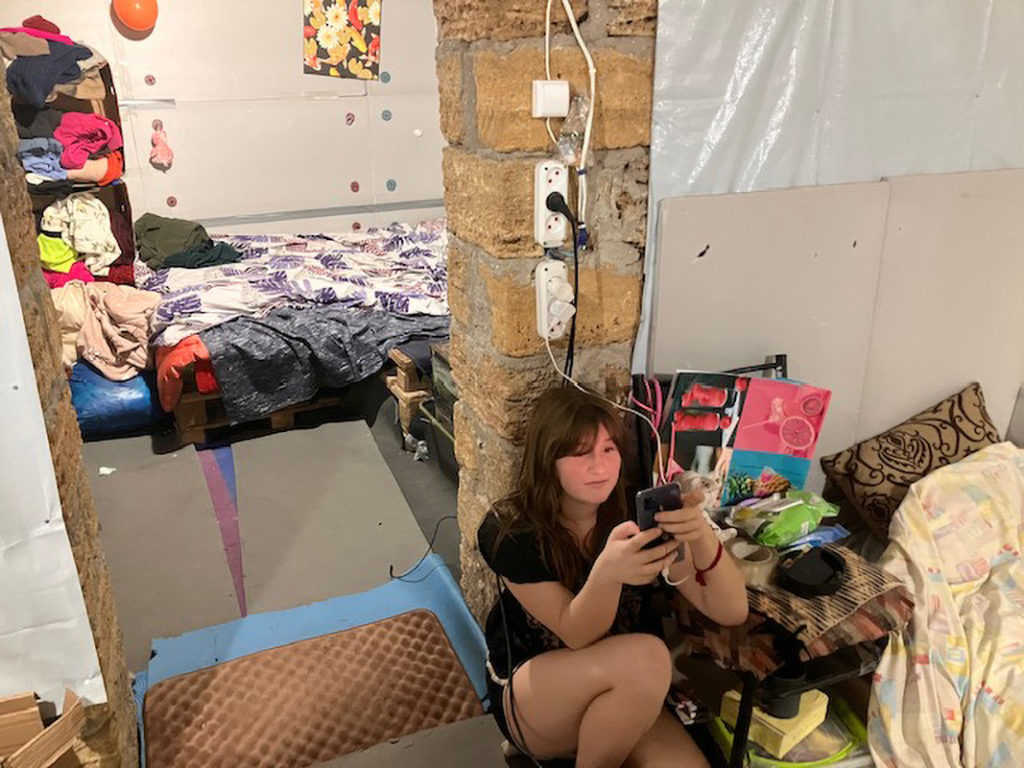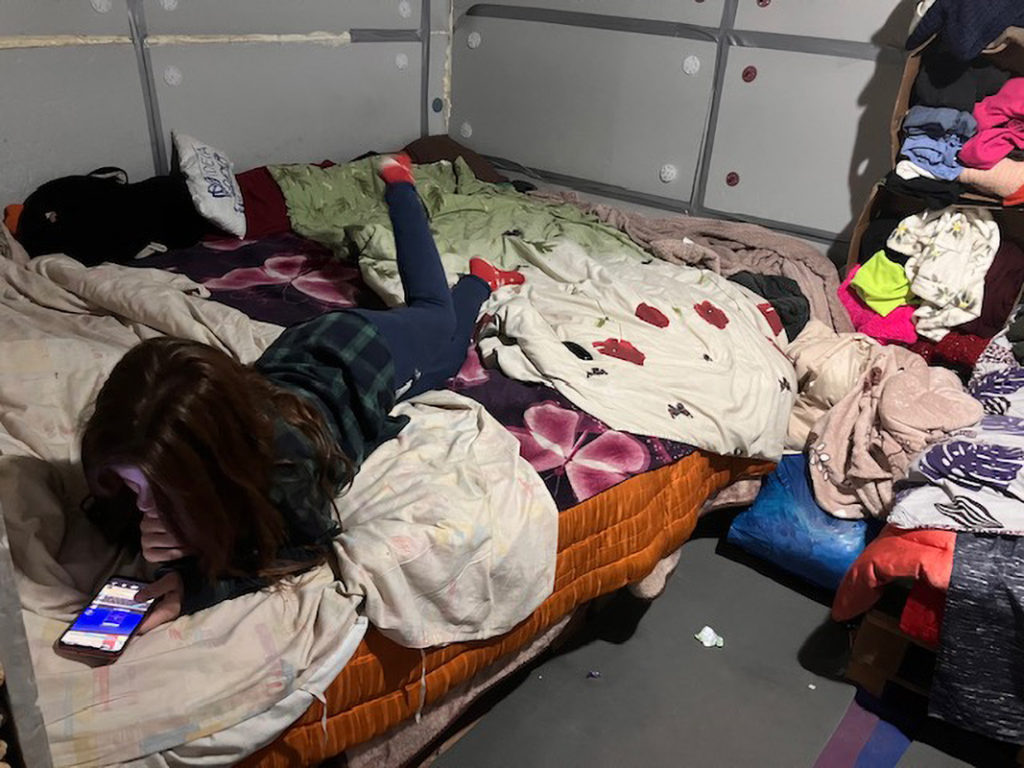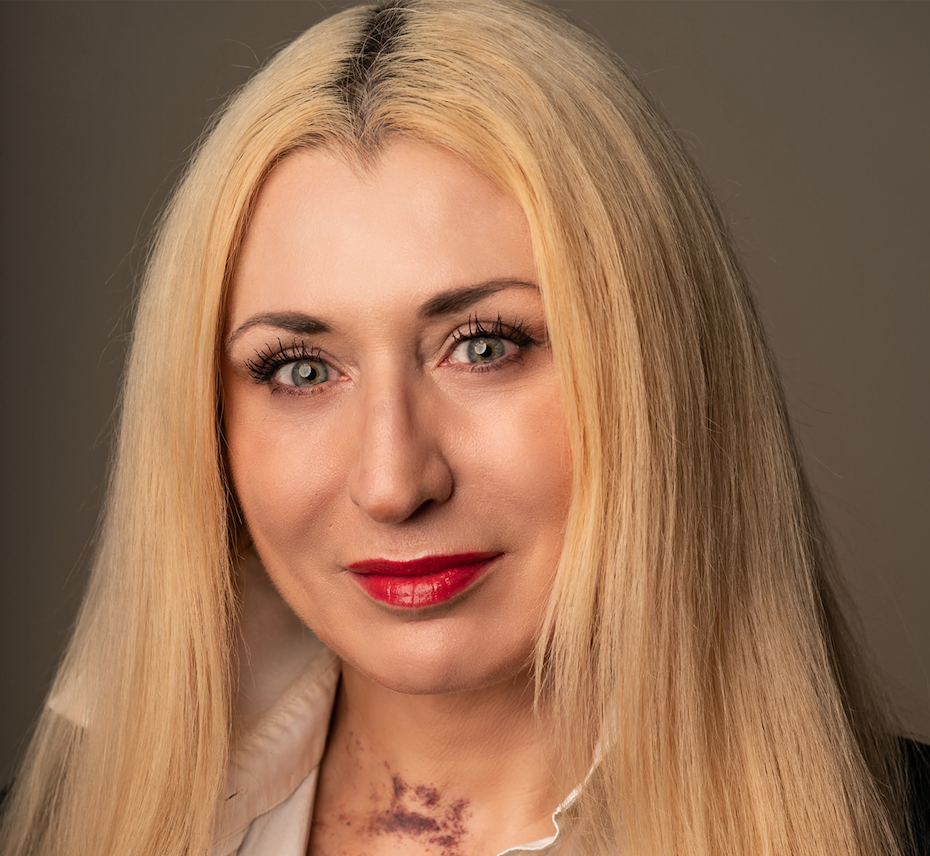
Yuri, a small business owner, ran his logistics business and owned a truck and a large garage in Mykolaiv, where he lived with his wife Svetlana, and two daughters, Karina and Alina, 12 and 13, in a comfortable apartment.
The family shared the apartment with a cat, two handicapped parrots they adopted from a rescue center, and two giant snails, a gift to the girls from Svetlana’s homeplace, the village of Oleksandrivka near Melitopol.
Yuri and Svetlana met 14 years earlier, and it was love at first sight. The girls loved to accompany their father on fishing trips and visit Oleksandrivka.
On the early morning of Feb. 24, 2022, the family awoke to loud explosions. Russian troops had attacked Ukraine. Yuri and his family hid in the moldy, damp and cold basement of the garage. On the first night, friends joined them and altogether nine people slept in two large and empty rooms, heated by one small oil radiator.
Since then, almost nine months of war have passed. The Albeshchenkos’ lives have changed drastically. Yuri and Svetlana turned the basement garage into their own private bunker.
Svetlana’s home village was occupied, and no one could visit Oleksandrivka. The girls do schooling online.
Yuri founded the Mykolaiv Volunteer Center and runs it, helping the city’s residents suffering from daily bombardments with humanitarian needs and the army with necessary supplies.
Part of the top floor of their new residence has been turned into a warehouse. Yuri fundraises, obtains and delivers to the front warm clothes, blankets and hygiene articles such as toilet paper and soap.
Their new home is roomy, cozy and well-equipped. The oversized Ukrainian flags decorating the walls are covered with the autographs of the territorial defense unit fighters and the military from Mariupol, Donbas, which is currently occupied by the Russian troops.
Instead of just one socket for the whole premises, multiple sockets on both levels are installed to charge phones and other communication devices.
Yuri brought a plastic water container with a volume of 1,000 liters. Another rescue cat, an enormous black one called Borisovich, sleeps on it.
Mykolaiv has been without drinking water since March because the Russian troops deliberately destroyed the water supply system by shelling. The technical water coming out of pipes in apartments is brown and smelly and is not to be consumed. Odesa residents have been collecting and delivering drinking water to Mykolaiv for months.
“We are lucky,” says Yuri. “We have a well nearby. The city water inspection ran a test and concluded that the water meets all the safety standards. The full container lasts us a month, about 250 liters a week. We don’t cut back—we make tea, wash dishes, wash up.”
To take showers and do laundry, the family goes back to their apartment daily. Their pets still live there. Staying overnight is impossible due to almost daily shelling and artillery fire.
Mykolaiv has been under fire almost daily. On the morning of March 29, in a major attack, a Russian missile hit the regional administration building, destroying the central part, killing 37 and injuring 34. Many residential buildings have been damaged by the prohibited cluster munitions that the Russian military has used to destroy Mykolaiv and kill civilians.
In June 2022, the mayor of Mykolaiv, Oleksandr Sinkevich, said that “everyone who wants to stay alive” should leave, adding, “don’t be like pharaohs buried in their pyramids.”
Recently, Iranian kamikaze drones were used to attack the city of Mykolaiv. In October, a drone hit oil containers of one of the leading exporters of sunflower oil in Ukraine and the oil was flowing down the streets.
Previously, on June 22, the refinery was attacked by a cruise missile. Seventeen percent of the world’s exports of sunflower oil pass through this terminal in Mykolaiv.
Still, of the 486,000 in population before the war, 220,000–230,000 people remain despite daily bombardments. As of Nov. 4, in Mykolaiv, 149 civilians had been killed by Russian rockets, including two children, and 698 people seriously injured, of which 10 were children, since the beginning of the war.
On Nov. 11, a five-floor residential building in Mykolaiv was destroyed, and eight people were killed. Roma, 14, lost his mother and stepfather, who died under the rubble.
“One moment I was asleep,” Roma said to journalists. “The next moment, there is an explosion. I open the door of my bedroom—and there is no living room or hallway.”
In the apartment on the top floor, only one wall with a red carpet was left.
“It is safer in the basement,” says Yuri. “It is also romantic. Didn’t you dream of building underground passages or tree houses when you were a kid? Now we gotta live it.”
“We are doing it for the kids’ safety,” said Svetlana. “I would like to go back to the apartment. There are rats in the storage room.”
The toilet visits are an adventure, too. The outside facility, a simple wooden hut with a hole in the ground and no light, is a good five-minute walk. As there are no lights in Mykolaiv after curfew, nature calls at night present a challenge.
Alina and Karina, karate champions, are used to living in the basement and don’t seem to mind the toilet outside or the journalists’ visits. They attend their online school, watch movies on a large-screen TV on the wall, play with Borisovich the cat and sleep together on a makeshift bed with many blankets and toys.
Our TV crew stopped by Yuri’s garage on the way to liberated Kherson, a city 42 miles south of Mykolaiv. It is not unusual for journalists from all over the world to stay over at the Albeshchenkos.

The door panels carry multilingual messages from international TV crews and war correspondents from Norway, Israel, Australia and the United States. The bunker has appeared in the Italian and French press.
The girls are used to photographers and answer questions about their life during the war with grace and poise. “We like living here,” says Karina.
Mykolaiv, the city on the first line of defense in the southern direction, has been protecting Odesa from invasion since the start of the full-scale invasion. If Russians were to seize Mykolaiv, they would be able to curtail Ukraine’s access to the Black Sea.
The Kremlin has spoken of its intention to seize Odesa and then Transnistria, an unrecognized breakaway territory of Moldova, controlled by Russia. Putin’s lifelong ambition to restore the Soviet Union turned Yuri’s family life upside down, but they refuse to leave or give up.
Just like millions of their compatriots, the Albeshchenkos are living for victory and waiting for a day to return back home.


